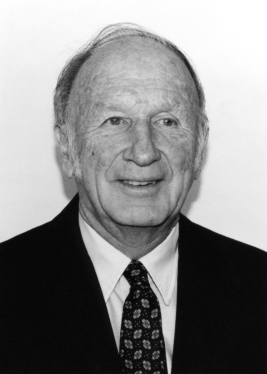
The Butterfly Effect
The butterfly effect is a well-known concept in pop culture. As of the time of writing this post you can find 69 different movies or TV show episodes titled "Butterfly Effect" on IMDB.
A simple explanation of this concept comes from Jeff Goldblum in Jurassic Park.
This is the main idea behind Chaos theory and unpredictability: a tiny flap of a butterfly's wings in Brazil can have huge unpredictable effects, like setting off a tornado in Texas. These exact terms come from a paper published 50 years ago.
So what is Chaos?
Who was Edward Norton Lorenz?
And how did he come up with this metaphor?
It all comes to a fundamental question: how well can we predict the future?
A predictable universe
Back in the late 1600s, from the moment Sir Isaac Newton published his law of universal gravitation, humanity felt omnipotent and believed science could predict everything. The theory became known as the "first great unification". For the first time, objects around us and planets in the sky were all moving according to the same rules or formulas. Everything was in order. You could measure and calculate everything. This was total scientific determinism and the birth or Modern Science.
A great articulation of this concept was made by Pierre-Simon Laplace in 1814. If we consider an entity which would know everything about the universe (known as "Laplace's demon") then "for such an intellect nothing would be uncertain and the future just like the past would be present before its eyes". Or how the future is already fixed, as you can predict it from its past. The concept of a clockwork universe.
But some systems seem unpredictable

In the late 1950s, Edward Norton Lorenz, a meteorology professor at MIT, tried to run simulations of the Earth's atmosphere. That approach treated the atmosphere as one large system to be analyzed using the equations of fluid mechanics.
Computers allowed unprecedently fast complex calculations, so there was a strong belief that these new tools would allow us to find periodic patterns, precisely repeating sequences, and help defining a better weather forecasting model. He used a set of 12 equations with 12 parameters (like temperature, pressure, humidity, wind speed, etc). Results were printed for each timestamp so you could see the evolution of the parameters over time.
In a winter day, he tried to re-run a simulation by entering numbers half-way from a previous print run, got himself a coffee, and came back to see the results. To his surprise the new run followed the previous one for a short time, but soon diverged until describing a system in a totally different state. This result, based on computer calculations, would change the course of science.
He first believed the computer was broken, as it seemed impossible the same equations and parameters would give any different result. It turned out the problem was coming from the values themselves. The printed values used 3 decimals, while the computer was doing calculations using 6 decimals. A tiny little rounding of .506127 to .506 could give a totally different result.
Trying to understand this phenomenon, Lorenz simplified the system to 3 equations and 3 parameters for representing the motion of a gas.
This system is known as the Lorenz equations.

Even with this simpler system, he observed the same result. He found systems with sensitive dependence on initial conditions, which became the main concept behind Chaos theory. In such system, forecasting the future can be nearly impossible.
This system is not random, it is totally deterministic. But this system is chaotic, because a tiny difference in initial conditions will lead to a totally different final state.
Chaotic systems in real life
In real life we read values from measuring tools, which always present a certain precision range, as a consequence we will never know the exact infinitesimal value of each parameters. So Lorenz system becomes both deterministic and unpredictable.
Even today, this is still the reason why even supercomputers can't forecast the weather with accuracy past few days. The further you try to predict the future, the harder it becomes. Past a certain point, predictions are no longer better than guesses.
This is also the reason why we generally accept the idea that AI needs to collect and process as much data as possible, sometimes data which even seems unrelated, to deliver results as precise as possible.
Born from observing weather patterns, Chaos theory found applications in many areas like geology, mathematics, biology, computer science, economics, finance, philosophy, politics, psychology, robotics, and the list goes on... Chaotic indicators appear in global epidemics, trade markets, biological evolution, road traffic, and even the long term evolution of the solar system.
And about the question whether a butterfly can really cause a tornado, Lorenz said in 2008 : “Even today I am unsure of the proper answer”.
So we can't predict the future?
As Lorenz wrote while visiting the University of Maryland: "Chaos: When the present determines the future, but the approximate present does not approximately determine the future".
So you can't predict with accuracy, but you still know the system perfectly. If you consider initial values, you can then calculate how the system evolves over time. And in the case of Lorenz system, we can see an "attractor".
The values are never looping or following an already seen behavior, as it would then become predictable. In a way, each path you draw is an infinite curve on a finite space. The values don't really converge, but go towards a specific path: an "attractor".
So you can't forecast precisely how the reality evolves, but you can simulate how any individual state will evolve. And in the case of Lorenz equations, drawn under 3 dimensions they take the shape... of a butterfly!
